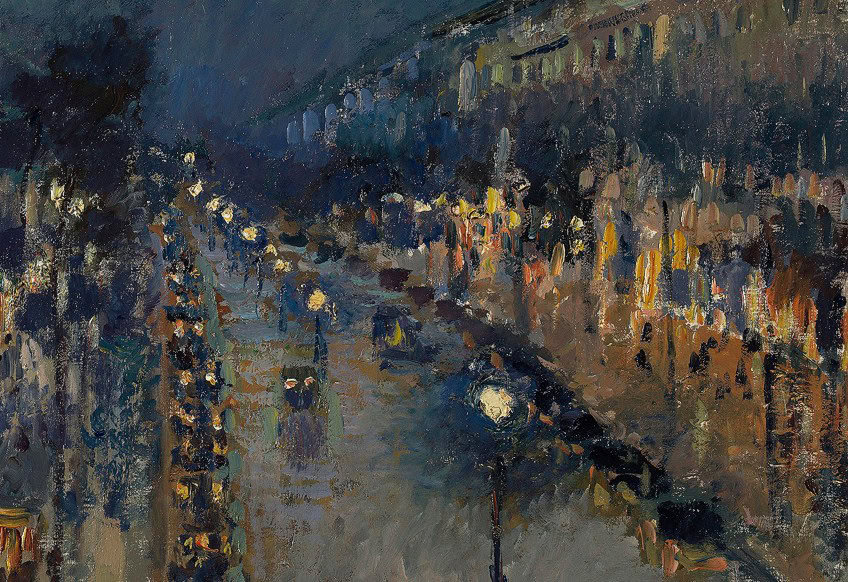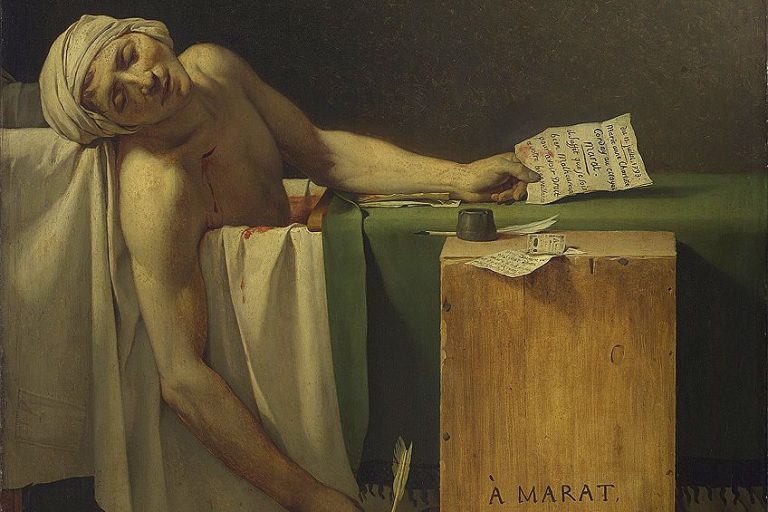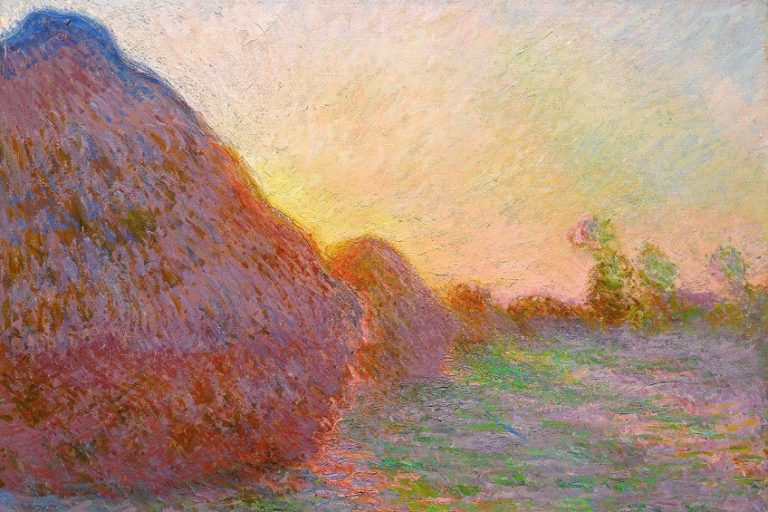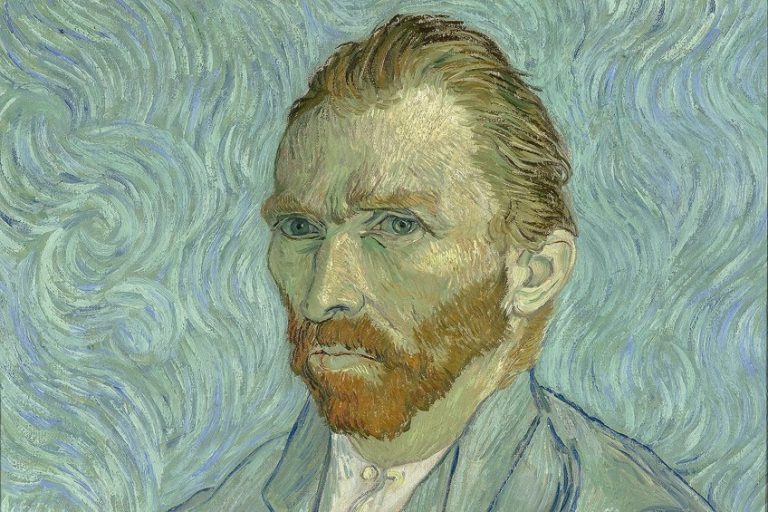“The Boulevard Montmartre at Night” by Camille Pissarro – A Look
Camille Pissarro’s The Boulevard Montmartre at Night is a masterful example of the artist’s ability to capture the vibrant life of Parisian streets. As one of the leading figures of the Impressionist movement, Pissarro was known for his innovative use of light and color to depict the bustling energy and atmosphere of urban settings. This particular painting, part of a series depicting the Boulevard Montmartre at different times of the day and in various weather conditions, showcases his fascination with the effects of artificial lighting and the dynamic interplay between shadow and illumination. The scene is filled with the luminous glow of streetlights, the movement of carriages, and the lively presence of pedestrians, all rendered with Pissarro’s characteristic brushwork and keen observational eye. The Boulevard Montmartre at Night not only exemplifies Pissarro’s technical skill but also offers a captivating glimpse into the nocturnal life of 19th-century Paris.
Key Takeaways
- Pissarro’s 1897 painting captures a vibrant Parisian night scene.
- It depicts the effects of new electric lights and traditional gas lamps.
- The artwork is housed in the National Gallery, London.
Historical and Artistic Context of the Painting
| Artist | Camille Pissarro (1830 – 1903) |
|---|---|
| Date Created | 1897 |
| Medium | Oil on canvas |
| Genre | Urban landscape |
| Period/Movement | Impressionism |
| Dimensions (cm) | 64.8 × 53.3 |
| Series/Versions | Part of a series of Boulevard Montmartre paintings |
| Where Is It Housed? | The National Gallery, London, United Kingdom |
| What It Is Worth | Not publicly auctioned; significant cultural and historical value |
Camille Pissarro’s The Boulevard Montmartre at Night, painted in 1897, offers a captivating glimpse into the heart of Paris during a nighttime scene. This Impressionist masterpiece captures the lively boulevard after a rain shower, illuminated by a combination of electric street lamps and the warm orange glow of gas lights from windows. The painting brilliantly showcases Pissarro’s skill in portraying light and movement, making it a standout piece in his illustrious career.
Set against the backdrop of a bustling Parisian street, Pissarro’s work reflects not just the physical changes in the city but also the societal shifts of the time.
Observed from his hotel room at the Hôtel de Russie, the artist provides a unique vantage point that highlights the vibrancy and energy of city life. This perspective allows viewers to almost sense the rain-soaked air and the glittering reflections on the pavements.

The Boulevard Montmartre at Night currently resides in the National Gallery in London, where it continues to captivate art enthusiasts with its timeless charm. It stands as a testament to Pissarro’s ability to blend everyday scenes with the beauty of Impressionism, making it an enduring favorite for many.
Pissarro’s Artistic Style
Camille Pissarro was a leading figure in the Impressionist movement. His works are known for their vibrant brushstrokes and varied depictions of urban and rural landscapes. He often employed oil on canvas, a technique common among his contemporaries. Pissarro’s technique emphasized the effects of light and shadow, capturing the interplay between natural and artificial lights.
In The Boulevard Montmartre at Night, he uses flickering street lights to illustrate the bustling nightlife of Paris, showcasing both electric street lamps and traditional gaslights.
Pissarro’s Paris Series
The Boulevard Montmartre at Night is part of Pissarro’s extensive series focusing on Paris. During his stay at the Hôtel de Russie, he painted numerous cityscapes from his balcony, offering a unique perspective on the daily life of Parisians. This period included views of various boulevards and squares.

Unlike his rural scenes, Pissarro’s urban works feature dense, dynamic settings filled with pedestrians, carriages, and storefronts. This series provides a historical snapshot of 19th-century Paris, reflecting the city’s transformation into a modern metropolis.
Influence of Urban Changes on Pissarro’s Work
The late 19th century was a time of rapid urbanization in Paris. The introduction of electric lights and the modernization of public spaces significantly influenced Pissarro’s work. The contrast between old and new light sources – electric, gas, and oil-burning lamps – is vividly depicted in his night scenes. Pissarro was fascinated by the changing architecture and street layouts.
In The Boulevard Montmartre at Night, he not only captures the physical changes but also the evolving social dynamics.
This painting reflects both the beauty and the fast-paced life of Paris undergoing significant transformation. By bridging traditional Impressionist techniques with contemporary urban elements, Pissarro’s works remain valuable for both their artistic innovation and historical documentation.
Analysis of The Boulevard Montmartre at Night
Camille Pissarro’s The Boulevard Montmartre at Night captures a bustling Parisian street at night. The painting uses distinct techniques and elements to portray the scene vividly.

Use of Color and Texture
Pissarro employs a muted palette to illustrate the night scene. Shades of blue, black, and grey dominate, contrasting with the bright lights of shop windows. The texture is rough yet detailed, achieved through thick brushstrokes. These strokes convey movement, contributing to the painting’s dynamic feel.
- Colors: Deep blues, blacks, and greys for the night setting.
- Lights: Bright yellows and whites from shop windows and street lamps.
- Texture: Thick brushstrokes that add depth and animation.

Visual Elements and Techniques
The painting displays a fascinating interplay of light and dark. Street lamps and shop windows illuminate the scene, casting reflections on the wet street, suggesting recent rain or mist. Key techniques include:
- Brushstrokes: Swift and varied to give a sense of motion.
- Perspective: A central vanishing point draws the viewer’s eye into the painting.
- Shadows: Enhance the night atmosphere, adding mystery and depth.

Representation of Light and Atmosphere
Light plays a crucial role in The Boulevard Montmartre at Night. Streetlights and shop windows create a warm glow that contrasts with the dark surroundings. This artificial light reflects on surfaces, adding realism to the night scene. Atmospheric elements include:
- Light: Artificial light from shops and lamps brightens the street.
- Weather: Implied rain or mist through reflective surfaces.
- Ambiance: A busy yet calm night in Paris, with an artistic capture of urban life at night.
The combination of these elements showcases Pissarro’s mastery in depicting the essence of nighttime urban life seamlessly.

Legacy and Display
The Boulevard Montmartre at Night by Camille Pissarro is regarded as an iconic example of Impressionist art. This painting has captured the imaginations of art lovers and scholars alike, maintaining its status within the broader art world.
Public Perception and Criticism
From its creation in 1897 to today, The Boulevard Montmartre at Night has been lauded for its depiction of urban life. The painting’s lively representation of a bustling Parisian street at night draws viewers into the scene. Critics admire Pissarro’s use of light and shadow to portray the vibrancy of Boulevard Montmartre. Its impressionistic brushstrokes relay the sense of movement and bustling atmosphere, making it one of Pissarro’s most celebrated pieces.

Exhibition History
The painting currently resides in the National Gallery in London. It is generally displayed in Room 43, where visitors can view it alongside other prominent works from the Impressionist era. The National Gallery hosts this artwork as part of its permanent collection, allowing art enthusiasts to consistently engage with Pissarro’s vision.
This notable location, in Trafalgar Square, provides significant exposure to thousands of visitors annually.
Influence of The Boulevard Montmartre at Night Today
Today, The Boulevard Montmartre at Night continues to inspire. Modern artists draw on Pissarro’s techniques to portray urban landscapes. Art schools often use this piece to teach students about the importance of light and atmosphere in painting.

Additionally, prints and reproductions of this artwork are popular, ensuring that its cultural impact endures well beyond the walls of the National Gallery. This painting remains a testament to Pissarro’s enduring legacy in the art community.
The Boulevard Montmartre at Night stands as a testament to Pissarro’s profound engagement with the urban landscape and his mastery in capturing the ephemeral qualities of light and atmosphere. This painting is not merely a depiction of a street but a vibrant exploration of the modern city at night, reflecting the energy and movement of Paris during the late 19th century. Through his innovative techniques and perceptive vision, Pissarro invites viewers to experience the enchanting nocturnal ambiance of the Boulevard Montmartre, highlighting the transformative power of light in shaping our perception of space and time. As part of his broader series on urban scenes, this artwork exemplifies Pissarro’s pivotal role in the development of Impressionism and his enduring influence on the portrayal of contemporary life.
Frequently Asked Questions
What Artistic Techniques Did Pissarro Employ in The Boulevard Montmartre at Night?
Pissarro used short, quick brushstrokes to capture the scene’s movement and energy. His use of light and shadow created depth, making the street appear lively. The painting also emphasizes perspective through the alignment of the street lamps, curving roads, and buildings to draw viewers into the bustling scene.
How Does The Boulevard Montmartre at Night Reflect the Urban Experience of Late 19th Century Paris?
The painting shows a busy, modern Parisian boulevard illuminated by new electric street lamps. It highlights the city’s vibrant nightlife and the constant movement of people and carriages. This reflects the growth and changes in Paris during that time, emphasizing urbanization and the lively culture of the era.
What Is the Significance of the Lighting and Color in The Boulevard Montmartre at Night?
Pissarro used the contrast between the electric street lights and the orange glow of gas lamps to highlight the modernity of the city. The mix of dark and bright colors portrays a lively night scene, enhancing the atmospheric effects. These choices in lighting and color help convey the dynamic spirit of Paris at night.
How Did The Boulevard Montmartre at Night Influence the Impressionist Movement?
The painting is an example of how Impressionism captures the essence of a moment through light and color. Pissarro’s approach to depicting urban life at night provided inspiration for other Impressionists. It highlighted the movement’s focus on capturing contemporary life and its fleeting moments, influencing how cityscapes were portrayed in the art community.
Isabella studied at the University of Cape Town in South Africa and graduated with a Bachelor of Arts majoring in English Literature & Language and Psychology. Throughout her undergraduate years, she took Art History as an additional subject and absolutely loved it. Building on from her art history knowledge that began in high school, art has always been a particular area of fascination for her. From learning about artworks previously unknown to her, or sharpening her existing understanding of specific works, the ability to continue learning within this interesting sphere excites her greatly.
Her focal points of interest in art history encompass profiling specific artists and art movements, as it is these areas where she is able to really dig deep into the rich narrative of the art world. Additionally, she particularly enjoys exploring the different artistic styles of the 20th century, as well as the important impact that female artists have had on the development of art history.
Learn more about Isabella Meyer and the Art in Context Team.
Cite this Article
Isabella, Meyer, ““The Boulevard Montmartre at Night” by Camille Pissarro – A Look.” Art in Context. July 1, 2024. URL: https://artincontext.org/the-boulevard-montmartre-at-night-by-camille-pissarro/
Meyer, I. (2024, 1 July). “The Boulevard Montmartre at Night” by Camille Pissarro – A Look. Art in Context. https://artincontext.org/the-boulevard-montmartre-at-night-by-camille-pissarro/
Meyer, Isabella. ““The Boulevard Montmartre at Night” by Camille Pissarro – A Look.” Art in Context, July 1, 2024. https://artincontext.org/the-boulevard-montmartre-at-night-by-camille-pissarro/.











